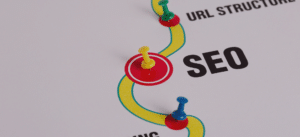The Impact of Slow Load Times: How They Can Undermine Your Digital Marketing
In the fast-paced digital landscape, where user attention spans are fleeting and competition is relentless, every millisecond of load time can make a significant impact on your online presence. A slow-loading website can be detrimental, driving potential customers away and severely affecting your bottom line. Not only does a sluggish load time frustrate users and lead to higher bounce rates, but it also negatively impacts your search engine optimization (SEO) efforts, making it harder for your site to rank well on search engine results pages (SERPs). In this piece, we will explore the critical importance of website speed and how optimizing load times can enhance user experience, improve SEO, and ultimately bolster your digital marketing success.
The Impact of Slow Load Times
User Experience and First Impressions
First impressions are everything, especially in the virtual world. When a visitor lands on your website, they expect it to load swiftly and seamlessly. If they’re met with a sluggish loading process, frustration sets in, leading them to abandon your site for a faster alternative. In today’s hyper-connected world, where information is readily available at our fingertips, users simply don’t have the patience to wait for a slow website. This frustration directly impacts your user experience and can deter potential customers from engaging with your content or services. Therefore, ensuring quick load times is crucial for retaining visitors and improving your chances of making a positive impression.
Load Time and SEO Rankings
Moreover, slow load times can have a detrimental impact on your search engine rankings. Search engines like Google prioritize user experience, and one of the key factors they consider is website speed. A slow-loading website sends a negative signal to search engines, potentially causing your site to rank lower in search results. In contrast, a fast-loading website not only keeps visitors engaged but also improves your chances of ranking higher on search engine results pages (SERPs). This higher ranking drives more organic traffic to your site. Therefore, optimizing your website for speed is not just about user experience; it’s also a critical factor in your SEO strategy. Ensuring that your website loads quickly can help you climb the SERPs, making it easier for potential customers to find you.
Mobile Optimization Challenges
Furthermore, in an era where mobile usage continues to soar, optimizing your website for speed is more crucial than ever. Mobile users, in particular, expect instant access to information while on the go. If your website takes too long to load on mobile devices, you risk losing a significant portion of your audience and alienating potential customers. Mobile optimization involves ensuring that your site is responsive and that it loads quickly on different devices and network conditions. Slow load times on mobile can lead to higher bounce rates and lower engagement levels. This makes mobile optimization a critical aspect of your digital marketing strategy. Addressing these challenges can enhance user experience, improve SEO rankings, and help retain mobile users.
Strategies for Faster Load Times
Performance Optimization Techniques
To ensure that your website loads quickly and efficiently, it’s essential to implement performance optimization techniques. One effective method is to minimize HTTP requests by reducing the number of elements on a page. This can be achieved by combining files, such as CSS and JavaScript, to streamline loading processes. Image optimization also plays a significant role; compressing images without sacrificing quality can significantly decrease load times. Additionally, using browser caching allows returning visitors to experience faster load times as their browsers store previously loaded resources. Another technique involves leveraging Content Delivery Networks (CDNs) to distribute website content across multiple servers, reducing the distance data needs to travel. Finally, enabling compression through tools like Gzip can reduce the size of your website files, making them quicker to load. By prioritizing these performance optimization strategies, you can create a seamless user experience that encourages engagement and improves SEO rankings.
Enhancing Content Without Sacrificing Speed
Balancing rich content with fast load times is crucial for maintaining user engagement without compromising website speed. Begin by evaluating the necessity and impact of each content element. Prioritize high-quality, optimized media and use formats that balance quality and file size. Implement lazy loading for images and videos, allowing content to load only when it becomes visible to the user. This approach minimizes initial load times while maintaining a rich visual experience. Additionally, streamline your website’s design by eliminating unnecessary elements and scripts that can bog down loading speeds. Consider using asynchronous loading for scripts, ensuring that they do not block the rendering of page content. Regularly audit your website for outdated or redundant content to maintain optimal performance. By carefully managing and enhancing content, you can provide a comprehensive and engaging user experience that retains speed and efficiency.
Tools for Monitoring Website Speed
Effective monitoring of website speed is essential for maintaining optimal performance. Several tools are available to help identify and address speed-related issues. Google PageSpeed Insights is a popular choice, providing detailed reports on both desktop and mobile performance. It offers actionable recommendations to improve load times. Another robust tool is GTmetrix, which analyzes your website’s speed and gives a comprehensive breakdown of factors affecting load time. For real-user monitoring, Pingdom offers insights into user experiences across different locations and devices. It helps track performance trends over time. Additionally, WebPageTest allows you to run detailed tests from various locations worldwide, providing in-depth analysis of load times, request details, and more. By regularly using these tools, you can detect potential issues, optimize performance, and ensure your website delivers a fast and satisfying user experience. Monitoring tools are indispensable for maintaining both speed and efficiency in your digital strategy.



